In which I sketch Granada’s busiest square and travel to 1970s New York
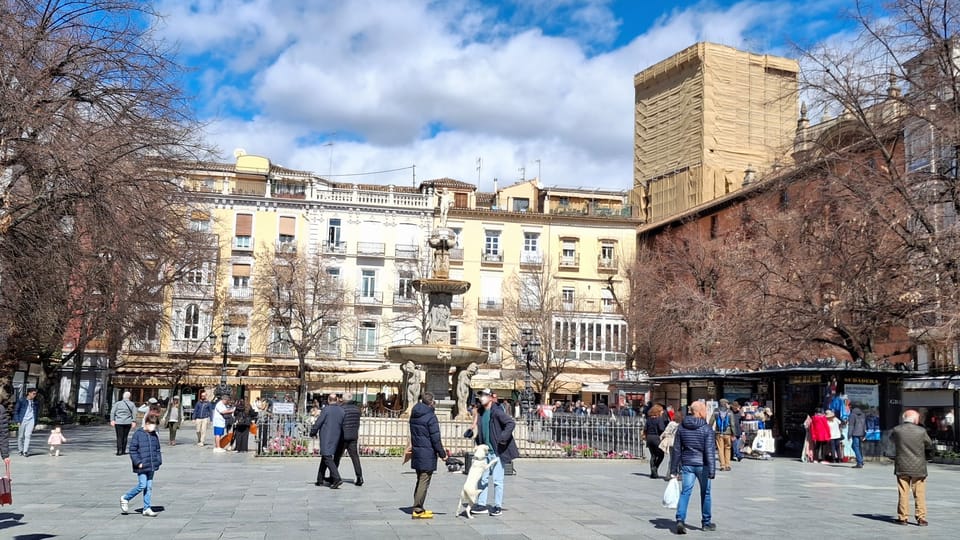
The last few weeks we’ve had an inordinate amount of rain in Granada. So when my urban sketching group proposed a last minute outing to take advantage of the sunshine, I was in.
We met in Bib Rambla, a beautiful square surrounded by pastel-coloured apartment blocks. For most of the year, the buildings peek out from behind lush trees. But right now, the naked branches mean the apartment blocks are on display, which gives the square an entirely different feel.
When I arrived, many of the other sketchers were painting the fountain in the centre of the square. The fountain is beautiful, but with four layers and multiple figures, it’s not an easy subject to sketch. I hadn’t sketched outside for a few months because of the cold, so I wanted to choose something straightforward but engaging for my brain. I found my subject in a corner next to my favourite spot for churros con chocolate: a cute kiosk with colourful signs and a candy machine.
There are so many things you can’t control when you’re sketching outside, like the changing light. So I like to make things easier for myself where I can. For this session, I decided on a limited colour palette and started sketching with a light-blue coloured pencil that matched the kiosk.
Sketching with a coloured pencil helps me to avoid getting stuck in trying to make the sketch perfect. It gives me the illusion that I can rub out any wayward lines, but I can’t really. So it encourages me to commit to the process and keep going, as if I were sketching with a pen. Plus, when I paint over the coloured-pencil lines, it creates fun textures. What started as a practical choice has inadvertently become part of my personal style when sketching on location, and a feature of my sketches that I've come to love.
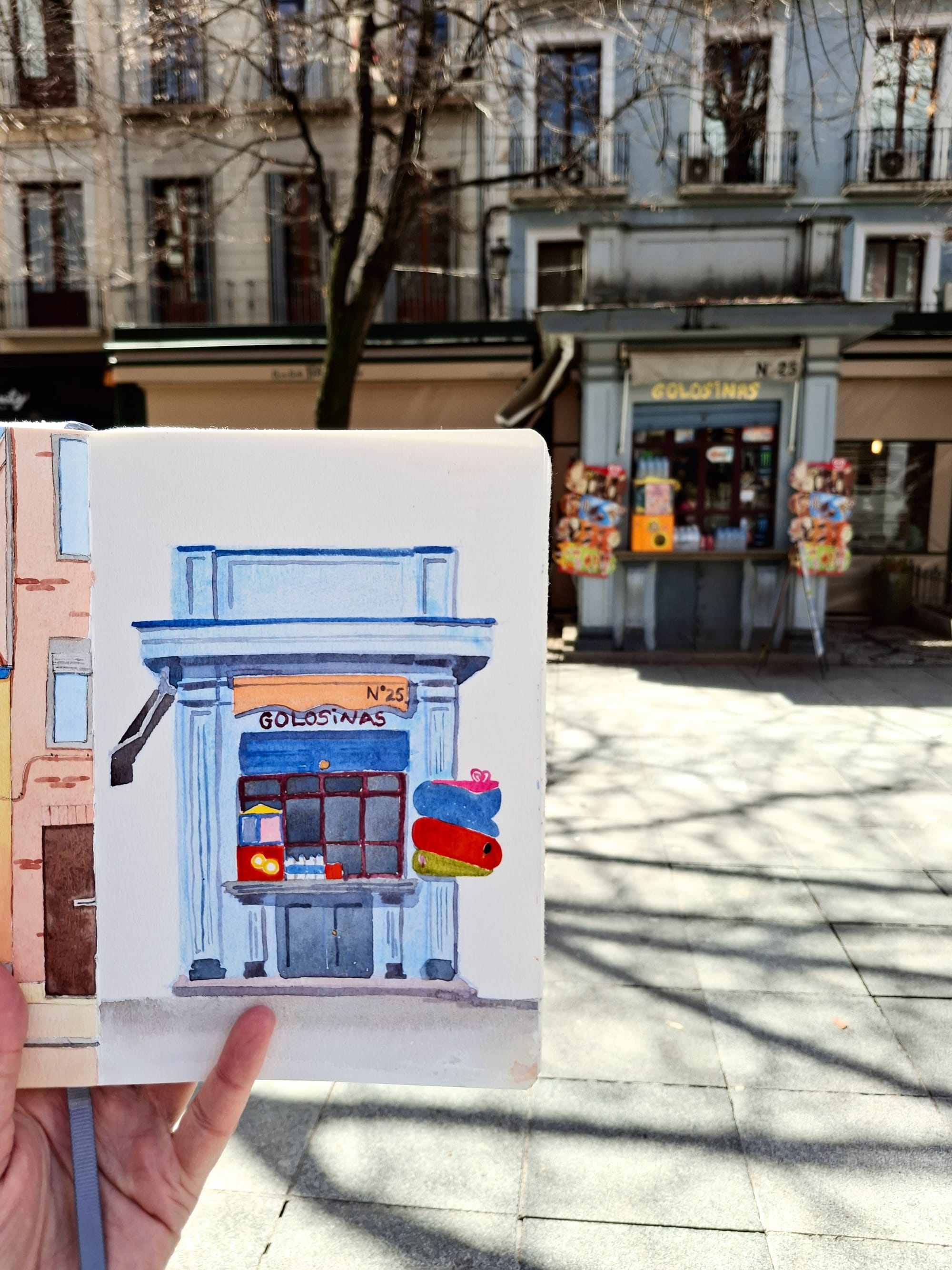
One of my favourite things about urban sketching, especially in such a busy place, is the unexpected conversations you have with strangers. During the two hours that I was in Bib Rambla, at least three people came up to have a quick chat or comment on my sketch in Spanish. A mother asked if I could show her son what I was painting, and I realised I was curled around my sketch like a dragon protecting its treasure. When I held up my sketch, she said she loved the colours and also that painting was hard. Not wanting to discourage her son, I said it was fun too! Another woman watched me for a moment, murmured, “It’s wonderful!”, and glided away.
And then there was a middle-aged man who stood behind my right shoulder for so long that I started to feel self-conscious before he walked away. But a few minutes later he came back to show me a 1971 photo taken by Helen Levitt, who was known for her photographs of daily life in New York. In the photo, two kids lean against coin-operated candy machines displayed in front of a blue, wooden wall. The girl’s bright dress is covered in yellow and orange flowers. She is eating a slushie, while the younger boy next to her focuses on something in the distance. His shirt has ridden up and his pot belly is sticking out. Levitt’s captured an ordinary moment that’s simultaneously full of power.
I’m so glad that man changed his mind and decided to share the photo with me. The colours and emotions in the photo had clear parallels to the scene I was painting, no matter that they were separated by continents and more than fifty years. I wasn’t familiar with Levitt’s work and I’m excited to explore her catalogue and way of seeing the world.
For me, the purpose of urban sketching is to play and be in the moment. That means that when I look at my sketch afterwards, there’s always something I would change or do differently next time. But I let these sketches stand as they are. They’re complete experiences encoded with tiny moments of connection.
If past experience holds true, when I look at this sketch in years to come, these moments and the feelings associated with them will come back to me. That’s more precious than any technical improvements or stylistic discoveries I could make, significant as I hope they’ll also be. Painting on location is a form of mindfulness that helps me to slow down and revel in life’s tiny delights.
When did you last have an unexpected conversation with a stranger that led to a moment of connection? How can you create more opportunities for these moments in your day-to-day life?
If you’re a sketcher, do you ever choose to sketch in busy locations like this? Why / why not? What would the process look like for you if sketching on location was easy?
Sketches from Granada celebrates every-day moments of connection with strangers, friends and ourselves. I know how easy it is not to be present in your life, and I hope these sketches inspire you to seek out the moments worth savouring in your own life.
If this post resonated with you, subscribe now to receive it directly in your inbox and keep this work accessible. And please share it with a friend you think might appreciate it too!
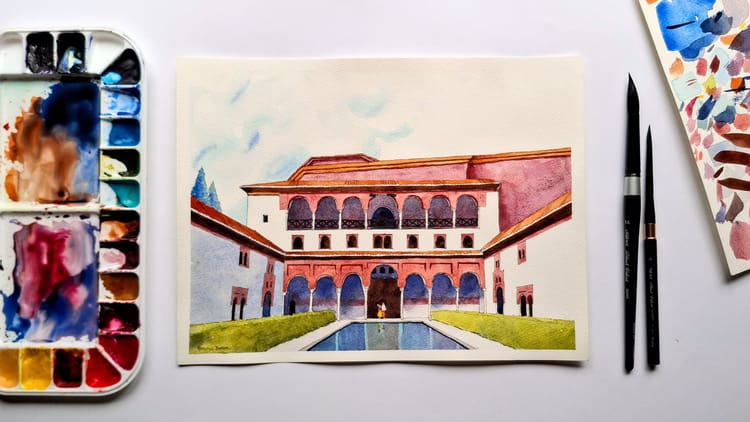
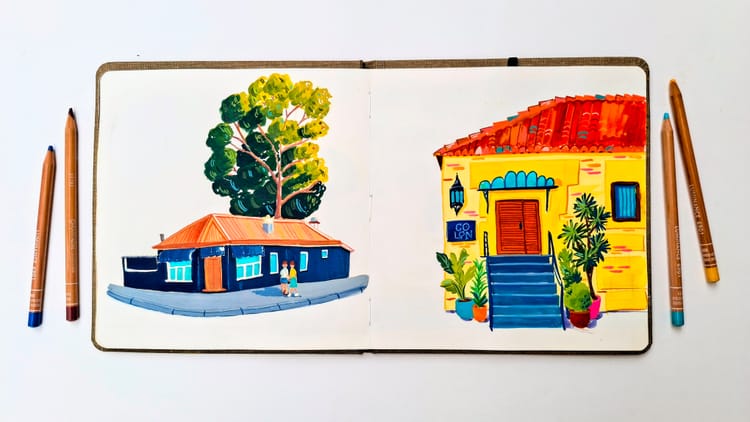
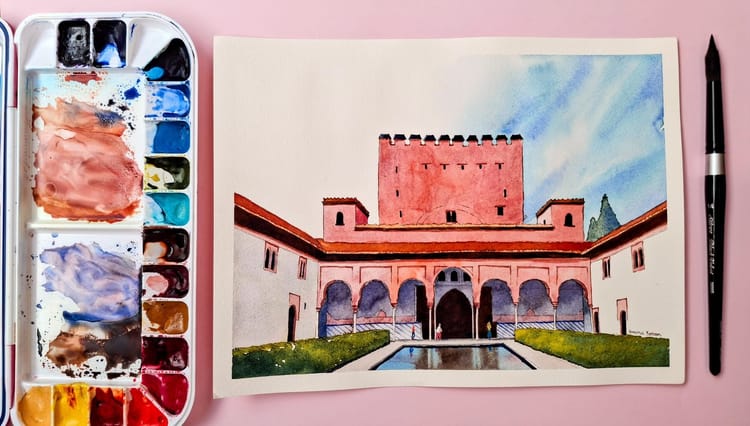
Comments ()